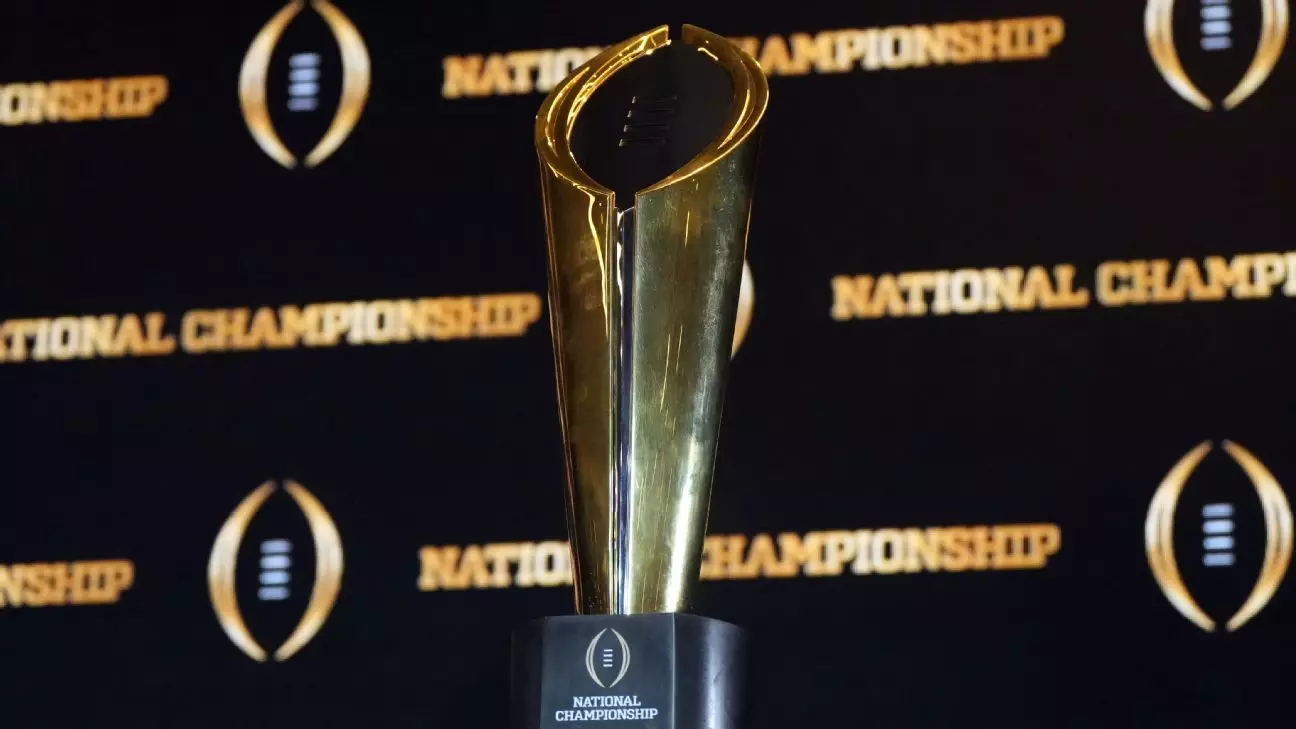The College Football Playoff (CFP) system is designed to showcase the top college football teams in the nation, culminating in highly competitive postseason matchups. However, the recent scheduling debacle surrounding the Goodyear Cotton Bowl Classic and the Capital One Orange Bowl has raised significant concerns about the fairness and logistics of these critical games. SEC Commissioner Greg Sankey’s call for a time adjustment, although ultimately denied, highlights the complexities and challenges tied to event management in college sports.
On Thursday, Greg Sankey articulated his concerns through various media outlets, including “The Paul Finebaum Show,” addressing the potential disadvantages faced by Notre Dame. Following their impressive victory at the Allstate Sugar Bowl against Georgia, Notre Dame was set to compete against Penn State in the Orange Bowl. However, Sankey pointed out that the scheduling left Notre Dame with a notably shorter turnaround time compared to Penn State, which had the luxury of observing a longer hiatus. The implications of such scheduling could dramatically affect team performance, a factor that deserves more scrutiny in the context of college football’s playoff framework.
CFP executive director Rich Clark later confirmed that fidgeting with the game times was not a feasible solution, arguing that the complexity of rescheduling would destabilize arrangements not just for the teams involved, but for fans and stakeholders alike. Logistics were compounded by the realities of community planning, venue availability, and ticket sales. Clark’s assertion that it was not an SEC-exclusive issue emphasizes the need for a collaborative approach among all stakeholders involved in college football.
Sankey’s request for a schedule change, though reasonable from a competitive fairness standpoint, collided with the practicalities of game management. Amid escalating concerns, he recognized that any modifications would entail balancing numerous moving parts, from event logistics to community expectations.
What adds another layer to this scheduling quagmire is the background context of safety and security concerns that emerged from a tragic incident in New Orleans. The attack that led to the loss of 15 lives called into question the adequacy of safety measures surrounding major sporting events. Consequently, the decision to adjust the timing of the Sugar Bowl by 18 hours was a proactive measure intended to ensure the well-being of everyone involved, from players to fans. The interplay of security and scheduling becomes vital as these events grow in prominence.
In the world of college athletics, adaptation is often a necessary trait. Sankey’s comments recognizing the unpredictable nature of sports highlight a broader truth relevant not only to college football but also to athletics in general—seasons are fraught with unexpected challenges. His assertion, “sometimes, just like within a game, you have to adapt, you have to adjust,” reflects the resilience required in the face of unforeseen complications.
This adaptability takes on heightened significance when you consider the emotional investments of teams, fans, and communities. Extreme circumstances can demand quick shifts in focus, making careful planning and responsiveness all the more vital. The tension between setting a fair competitive stage and ensuring logistical feasibility places incredible pressure on decision-makers.
Ultimately, the handling of the scheduling for the Cotton Bowl Classic and the Orange Bowl raises questions that extend beyond mere timings. They touch upon the very fabric of college sports’ competitive integrity and operational efficacy. As the landscape of collegiate athletics evolves, stakeholders must recognize the complexities of scheduling and logistics.
For the future, a more structured dialogue that encompasses all parties—schools, conferences, fans, and security agencies—may prove essential in navigating the intricacies of playoff management. In this landscape, every decision matters, and the conversations about fairness, security, and logistical realities must remain active to support the athletes and communities involved in these celebrated events. As college football continues to grow, so too must our approaches to ensuring that it remains a fair and resonant experience for all.


Leave a Reply